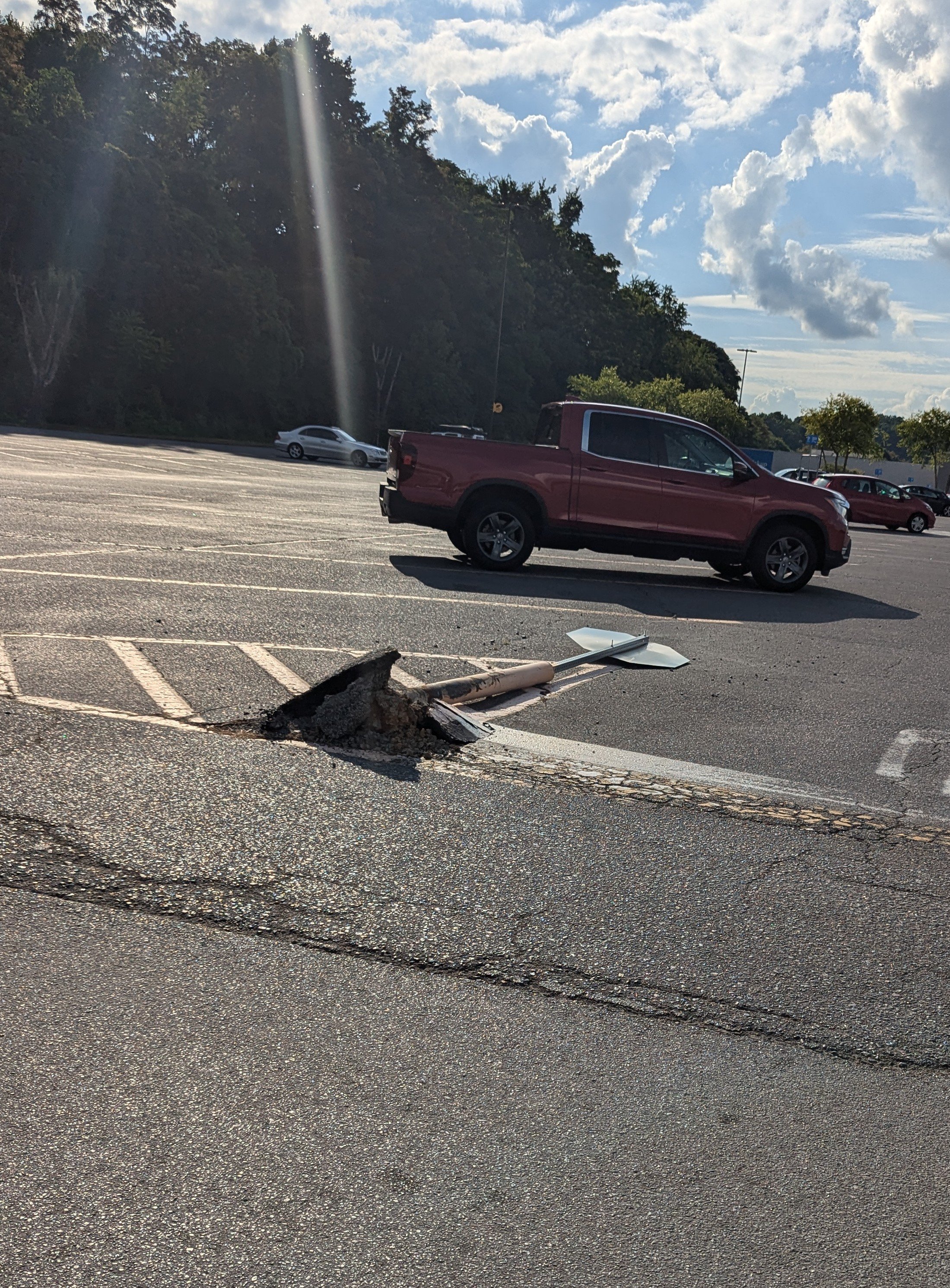Covering large parking lots with solar panels is an idea that goes back decades but in America at least it’s an idea that has never really taken off.
What is the reason for that? Is it due to the overall cost or is there something else that keeps Walmart, Target, Costco, Sams Club, Malls, etc. from covering their parking lots with these panels and selling the power?
Installing and maintaining solar panels costs a lot. Perhaps the businesses found that not profitable.
In Hong Kong, we have a “install solar panels on your roof” project, and the electricity company buys the power you generate at approx. 5x market price. It sounds great at first, but people quickly realized the installation and maintenance cost so much, you can only get back what you paid for after 10 years.
you can only get back what you paid for after 10 years.
Another way to look at it: It used to be 20-25 years, so 10 is probably the best it’s ever been for ROI.
It’s better, but not good enough for people to consider it
Emphasis on the 5x selling price too. Imagine they buy at market price
Interesting. In switzerland if you sell your solar power to the power company you get between 0.03-0.10 francs per kw/h while electricity costs between 0.25-0.40 francs. The calculated ROI is still 10-15 years for most people though
And many Cantons offer to subsidize part of the installation. With increasing energy prices I bet those ROI are going end up better than initially projected.
Isn’t 10 years around the expected lifetime of a panel?
Most panels now seem to have a warranty lasting 25 years, guaranteeing that they will still be producing x% of their original capacity at that time, such as 92% or 88%. Generally a higher guaranteed percentage will cost more than a lower guaranteed percentage with the same starting output. After that time they will continue producing electricity but their output may drop faster. Someone might decide to replace them even though they’re still producing if the output seems too low.
Most batteries seem to only come with 10 year warranties, though, and DC to AC inverters might only have a 10 year warranty.
They’re usually rated 20-25, but I think I read recently that some are still producing useful power after that.
Read an article on an early adopter that had over 30 year panels. They reported it was still producing around 70% of its original rated power.
That sounds like the one I’m recalling.
Solar panels are considered “end of life” when they only produce 70-80% of their rated power.
Another way to look at it: It used to be 20-25 years, so 10 is probably the best it’s ever been for ROI.
Depending on the State power prices and tax incentives/rebates and your power consumption there are those that are getting 6-8 year ROI.
That’s actually part of the point. Installing and maintaining solar panels on the roof is expensive. Installing them essentially on open ground ought to be significantly cheaper
You have to have a roof to have a building. It’s a built in cost. The only extra is expensive in a buisness roof build out is more electrical wiring and panel supports. You can also generally walk between them to maintain them.
Putting panels on the roof, especially the generally flat and accessible business roofs is way easier and cheaper than building out entirely new 12ft high buildings with trenched cabling and then adding panels.
No buildings, just solar panels on poles. You don’t risk the roof or the stores business. You can use heavy equipment like trenchers. No one has to set up scaffolding or risk a potentially deadly fall.
We have huge amounts of real life evidence that solar panels on poles in an empty flat elf are far cheaper to install and maintain than solar panels on a roof, especially a business that wants to stay open.
Solar panels on poles is probably somewhere in between. It seems like they’d be much cheaper, like solar panels on poles in a field, but I don’t know if real life bears that out yet
If you’re going up put them in a parking lot, they have to be up high enough that people need lifts and fall protection, and in order to actually use the parking lot you’ll need some heavy duty concrete supports, not just “poles”. And that’s before you even get into the cost of the electrical infrastructure. All the conduit will need to be buried, which means ripping up the parking lot and then repaving it, new subpanels and inverters, new meter, god knows what regulatory requirements…
You clearly have no experience or research into this matter so please stop assuming that you’ve figured it all out. It’s not as simple as all that.
10 year payback period sounds great if you’re staying there long term
Solar panels are very fragile; the weight of a car driving over them every day would cause them to break really quickly, not too mention the layer of rubber and dirt that will accumulate on them. I imagine the cost of installing and replacing them is also much higher than laying down a regular road surfice.
If they wanted to invest heavily in solar panels, why wouldn’t they just either put them on top of the shop building itself, or build a lightweight roof over the parking lot and put them on that?
Pretty sure they mean cover as in like a roof.
Ah, right. My bad. For some reason my head was stuck on those solar roadway thingies.
in places that have large open lot retail developments, it’s very likely you could just install the solar panels on undeveloped land a few miles away.
why would you complicate both efforts by trying to intertwine them?
I’ve seen a few parking lots by where I live that have solar panels which make great shade. Also a mobile home park that has panels over the mobile homes to keep them cool
That’s some really expensive shade to install.
Or if you do them on site, there’s a roof on the store that you can use first, without needing to do construction work. Covering the parking spaces requires some measure of construction work, underground electrical work, etc that could end up being pretty expensive compared to alternatives.
That assumes the buildings can handle them. A company I used to work for was planning to put solar on pretty much all of their buildings. Until they found out most of their buildings couldn’t handle the weight without significant (expensive) reinforcing. Many of their installations ended up on the ground instead.
I wish, we could at least make parking lots not pitch-black. They absorb so much heat in the sun, which makes them unpleasant to walk across and of course adds to cities being overly hot in general.
Two local shops here have their parking lots out of light gray paving stones, which is so much nicer. I’m guessing, they got forced to pave, so that rain water can drain, which is of course also quite a good idea…
My grocery store has some. I don’t know if it’s actually economical for them in terms of power, but the shade for the car is nice.
Basically solar panels need structural support.
To cover a parking lot, you must build the supports from scratch. To cover an existing rooftop, the structure’s already there.
It’s slightly more complicated but that’s the basic reason.
Supports are nothing compared to the electrical infrastructure needed to actually use the solar power. Adding solar to a commercial 3 phase switchgear is a massive headache.
All the benefits of solar, with all the downsides of a crumbling roadway infrastructure that doesn’t get the maintenance it needs as is even before adding in a fragile surface that will decrease overall performance of either generation or performance as a roadway.
Having large parking lots at all in the first place is already Doing It Wrong, so IDGAF if there are solar panels on top of them. They’d just be one more thing to bulldoze in order to rebuild the place properly.
What we need are solar panels on the roofs of mixed-use mid-rise buildings in walkable areas.
how are you gonna sell more cars that way? petroleum doesn’t buy itself, you know
Making the panels high enough off the ground with sparse enough supports to be convenient adds a lot of expense. I mainly see it in paid parking lots where the shade can be sold as a value add.
There’s an rei that does it near me, and it looks like they also save money on plowing in the winter. The spots don’t really get snow because of the cover, and the aisles are generally passable because traffic
The supports also need to withstand being rammed by drunks in dodge rams.
Maybe if they are moveable, they can dodge the ramming.
I think Target and McDonald’s have figured out the solution to that: surround the supports with concrete pillars.
Bollards is the word for that.

You underestimate the power of the Dodge Ram
Same reason folks here arent getting solar panels, utter refusal to do anything about the climate.
My panels went up on my roof and came online earlier this year.
One of the Costco locations in Albuquerque has a solar covered parking lot. Inside they have a meter showing how much of their used electricity is from the solar.

They wouldn’t even have to sell it. Just make it available for EV charging, let customers swipe their card when they park, and top up while they shop.
I don’t know if that’s any less costly than selling the power to the grid, but it might help recoup the costs quicker.
Along with the points already made, selling energy back to the grid further complicates things. Selling energy as a non-utility is not allowed or practically worthless in a lot of states. So it’s really only valuable to the commercial space that can use it. Couple that with retail space like stip malls that rent their locations and there’s little incentive for the property owner to provide solar energy to the renter.
In Central Orange County, CA solar commonly seen covering parking at schools, transit hubs and government buildings. Less common on commercial lots but there are some. As renewable generation is helpful in attaining Leed certification it will become more common everywhere solar is practical.
It’s happened in some places. The local high school and train station parking lots where I live have them.












